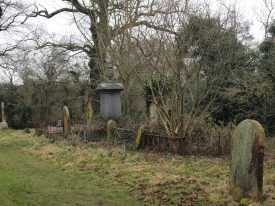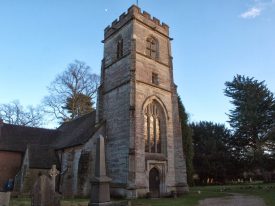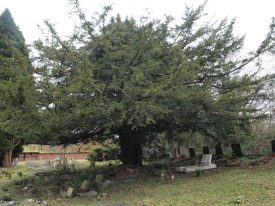This particular churchyard is a very rich site for wildflowers with other 100 species being identified – some of which are quite rare for this part of Warwickshire. It was a visit to this particular church several years ago that sparked off my interest in churchyards, and the benefits that many of them provide for wildlife.
The last remnants of ancient, flower-rich grassland in an area
Some churchyards are manicured and neat and tidy, but more and more parishes are creating a haven that can be used by wildlife and people. With the conversion of old pastures to arable farmland and improvements to grassland, churchyards, which have more or less escaped the appliance of weedkillers and fertilisers, often contain the last remnants of ancient, flower-rich grassland in an area. A wealth of wildlife can be found from ancient trees, lichens growing on gravestones and walls, fungi including waxcaps, ferns, reptiles and mammals.
With the decline of many common woodland and farmland birds, churchyards provide important habitat for these species providing shelter, food, roosting and nesting sites. The church building itself provides roosting and nest sites for bats and birds such as tits, starlings,house sparrows, kestrels, swifts, jackdaws and hirundines. Trees, including the evergreen yews and hollies are attractive to thrushes, greenfinches, coal tits and goldcrests.
Walls and crypts providing a home
Graves, stone walls and crypts are home to invertebrates providing food and nesting sites for wrens, robins and tits. Grass which is often cut short near the more recent graves provides foraging areas for starlings, green woodpeckers, thrushes and wagtails. Grass that is left to grow longer where the graves are old is interspersed with wild flowers attracting insects, which provide feeding areas for swallows, flycatchers, and warblers. Quieter areas of the churchyard left to their own devices will contain nettle patches, whilst elder and brambles and ivy will scramble over old tombs and trees.
There is a lot of interesting information on the website Caring for God’s Acre, and a few years ago I bought a very informative and delightful book (secondhand as its out of print now unfortunately) by Francesca Greenoak called “Wildlife in the Churchyard – The Plants and Animals of God’s Acre” exquisitely illustrated by Clare Roberts.
Another excellent article can be found in BTO News 233 March – April 2001. Entitled “’God’s acres’ live on as local nature reserves” by David Glue and Francesca Greenoak.
This page is an edited version of a piece published on Ragged Robin’s Nature Notes blog, and reproduced with the author’s permission.










Comments
Add a comment about this page